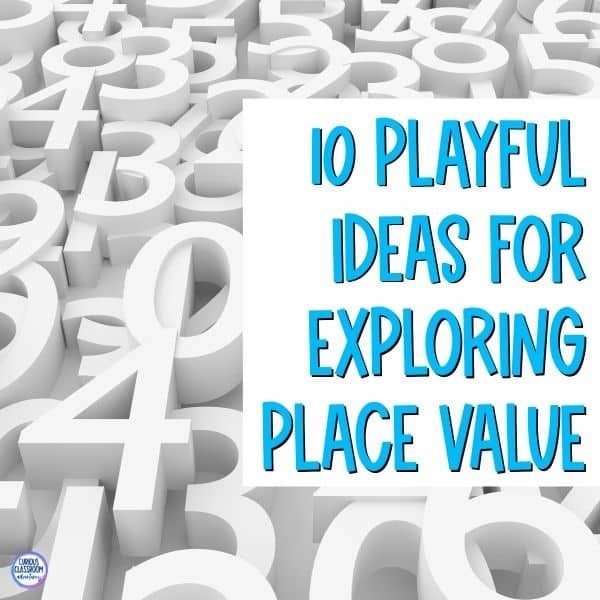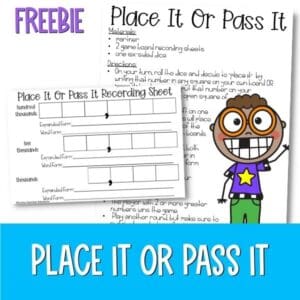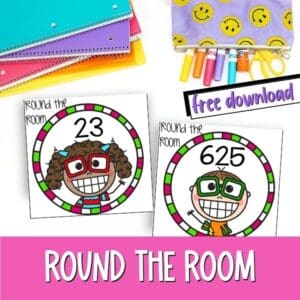Are you ready to start planning your math unit on place value? For me, this unit always falls during the first month of school when students are still trying to acclimate to a new classroom, and I’m still getting to know all of the unique abilities and quirks. For those reasons, I like to keep it playful but structured. With that in mind, here are my top 10 playful and creative place value activities to start your year off right. So, grab your number charts and let’s go!
Domino Duel:
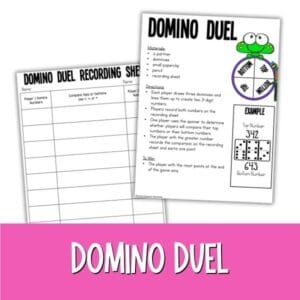
For these place value activities, each player draws three dominos and lines them up horizontally to create two three-digit numbers, one across the top and one across the bottom. Next, one player flips a coin to determine whether players will be comparing the top numbers (heads) or the bottom numbers (tails). The player with the greatest number in that spot earns a point for the round. The player with the most points wins at the end of 10 rounds is the winner.
Order Up:
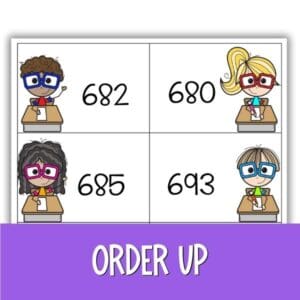
Next on my list of place value activities is Order Up. Write a set of numbers, one per index card, that use similar digits (i.e. 671, 761, 667, 716, and 677). Give a set of cards to each group of students. On your cue, have students line themselves up from least to greatest or greatest to least.
Place It or Pass It:
To play these place value activities, use a deck of cards with all the face cards removed. On their turn, students draw a card from a pile and decide whether they want to keep that card to build one of their own numbers or pass it to their partner to use. Each student will build a thousands number, a ten thousands number, and a hundred thousands number. The person with more greater numbers at the end of the game wins. Good news…I’ve included the directions and recording sheet in this free download.
Place Value Pockets:
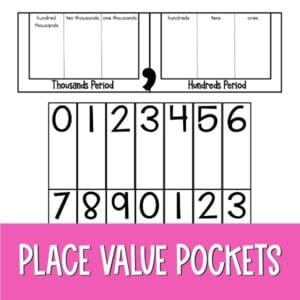
To help struggling learners understand the concept of expanded form, use a place value pocket pocket chart. Write a 0 on the back of all the number cards. To break into expanded form, they should keep the first digit and turn all the rest of the cards to the right of that digit to the “0” side. This will be the first number in the expanded form equation. They can turn one digit at a time back to the front to create each piece of the expanded form number.
Place Value Activities with Dice:

There is something about handing a kid a handful of dice that makes them perk up. For these place value activities, give your students 6 place value dice (ones, tens, hundreds, thousands, ten thousands, and hundred thousands) to roll an expanded number. Then have them line up the dice and record the number in expanded and standard form on a piece of paper.
Guess My Number:
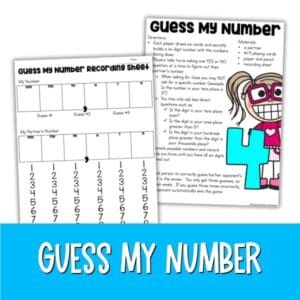
Playing against a partner, students draw 6 playing cards to create a six-digit number but keep it a secret from their opponent. Players take turns asking questions to eliminate possibilities by using place value language until they can figure out what number their partner created. For example, the guesser might ask, “Does thousands place have value greater than 3,000?” The first player to figure out the secret number wins. It’s helpful for students to use scrap paper to keep track of the numbers they’ve already guessed as they eliminate possibilities.
Round the Room:
Here’s another free download I’m sharing to get you stocked up on place value activities for this school year! Post signs for 20, 30, 40, and 50 in each corner of the room. Distribute 10s number cards to each student. Have them mix and trade around the room until you give a cue. On your cue, students should look at the card in their hand and round it to the nearest ten and stand in the corner that matches their answer. Switch out the 10s cards for 100 cards and hang the 600, 700, 800, and 900 signs. Repeat the activity to practice rounding to the nearest hundred.
Place Value Beach Ball Toss:
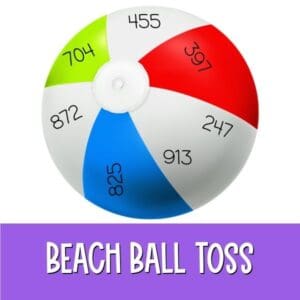
Incorporate physical movement into your place value activities by playing a game of beach ball toss. Write several different numbers on a beach ball underlying one digit in each number. Have the students toss it to each other. When a student catches the ball, they look at the number closest to their right thumb and read the number aloud. Then they will identify the value or the underlined digit. For example, if the number is 478, the value of the underlined digit is 70. These place value activities keep students engaged while reinforcing place value skills.
Place Value Pictionary:
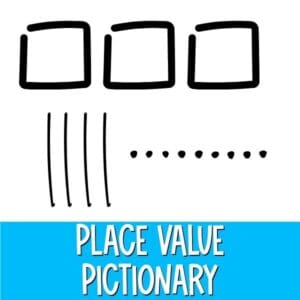
To encourage students to visualize place value concepts, put a creative spin on the classic game of Pictionary by having students draw representations of numbers based on their place value. For example, a student might draw 6 hundred squares, 3 groups of ten sticks, and 5 individual ones to represent the number 635.
Place Value Bingo:
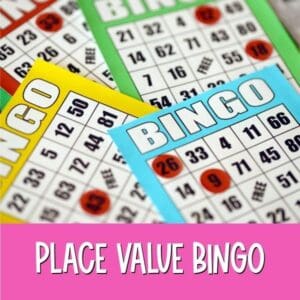
The final suggestion on my list of place value activities is a game of Bingo with a twist! Instead of calling out numbers, call out place value clues such as “I have 3 tens and 7 ones.” Students then find the corresponding number on their Bingo cards. This game reinforces place value understanding while adding an element of excitement to the classroom.
Out of these 10 playful ideas for place value, I hope you find one or two to add some spice to your lesson plans.
You can find these activities along with student instructions, recording sheets and more in these done-for-you place value units. Each lesson includes a mini lesson, an anchor chart, a peer practice activity, an interactive notebook entry, partner game with recording sheet, and a worksheet…think of these as your easy button for math lesson planning.

